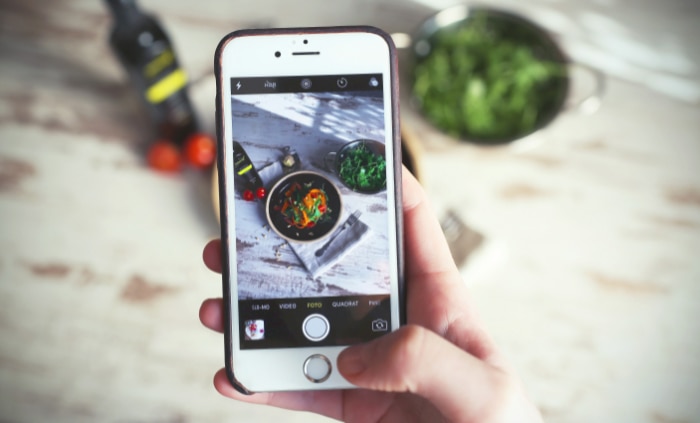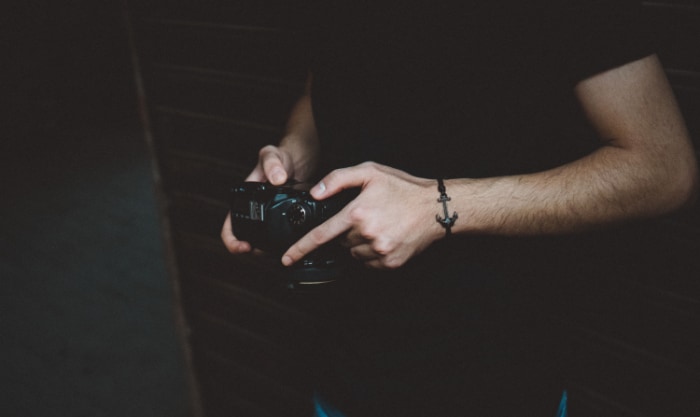How Many Pictures Can 8GB Hold? Space Unpacked

Have you ever wondered just how much your digital storage can handle, especially when it comes to preserving those precious moments captured in photos? This question becomes increasingly significant in a world where capturing high-resolution images is as simple as pulling out your smartphone.
With 8GB of storage, a seemingly modest amount by today’s standards, the number of photos you can store might surprise you.
The Role of Image Resolution
Image resolution plays a pivotal role in determining the file size of a photograph. Essentially, it refers to the amount of detail an image holds, which directly influences how much storage space it requires.
Higher resolution images, which are more detailed and clear, naturally take up more space.
Understanding Image Resolution
Resolution is measured in pixels, the tiny dots that make up a digital image. The more pixels an image has, the higher its resolution, leading to more detail and clarity.
Common resolutions include 720p (HD), 1080p (Full HD), and 4K (Ultra HD), each offering progressively more detail and, consequently, larger file sizes.
Common Resolutions and Their File Sizes
- 720p (HD): This resolution, standing for “high definition,” is 1280×720 pixels. It’s often seen in smartphones and entry-level digital cameras. Images at this resolution strike a balance between decent quality and manageable file sizes.
- 1080p (Full HD): With 1920×1080 pixels, Full HD is a step up in quality and is standard in modern smartphones and cameras. It provides clearer, more detailed images but also increases the file size.
- 4K (Ultra HD): Boasting a resolution of 3840×2160 pixels, 4K is at the higher end of consumer technology. It captures stunning detail and clarity, ideal for professional photography, but results in significantly larger file sizes.
Impact of Higher Resolution on Storage
As resolution increases, so does the file size of each image. This means that your 8GB storage can hold fewer high-resolution images compared to those of lower resolution.
For instance, where you might store thousands of 720p images, the number drastically reduces for 4K images. This trade-off between image quality and storage space is crucial for photographers and casual users alike.
Resolution Choices for Different Needs
Choosing the right resolution depends on your needs. If storage space is limited, lower resolutions like 720p might be more suitable.
However, for professional work or printing large photos, higher resolutions like 4K are preferable despite their larger file sizes.
Image Formats and Their Impact on Size
Choosing the right image format is as crucial as selecting the appropriate resolution when it comes to managing your digital storage. Different image formats like JPEG, RAW, and PNG each have unique characteristics that affect the size of the files they create.
This variation in file size can significantly influence how many photos you can store on an 8GB device.
Exploring Popular Image Formats
JPEG: The Balancer
- Overview: JPEG (Joint Photographic Experts Group) is the most widely used image format, known for its balance between quality and file size.
- Characteristics: It uses lossy compression, meaning some quality is sacrificed for smaller file sizes.
- Ideal Use: Perfect for everyday photography and sharing online where high resolution is not the primary concern.
RAW: The Detail Keeper
- Overview: RAW format is popular among professional photographers for its high quality.
- Characteristics: It stores all image data captured by the camera sensor, leading to large file sizes but offering the highest quality.
- Ideal Use: Best for situations where editing and post-processing are required, as it allows for more flexibility due to its comprehensive data.
PNG: The Clarity Preserver
- Overview: PNG (Portable Network Graphics) is often used for web graphics.
- Characteristics: It offers lossless compression, meaning no quality is lost, but this can result in larger file sizes than JPEG.
- Ideal Use: Suited for images requiring high clarity and detail, like graphics and logos, but not typically used for standard photography due to its larger size.
Impact on Storage Capacity
The choice of format has a direct impact on how many photos your 8GB can hold. JPEG, with its smaller file size, allows for storing a larger number of images.
On the other hand, RAW and PNG, with their larger file sizes, reduce the number of photos you can save.
Making the Right Choice for Your Needs
Your choice of format should align with your specific needs. If you’re looking to store a large number of photos and are okay with good enough quality, JPEG is the way to go.
For professional work requiring detailed editing, RAW is the better choice despite its larger file size. PNG finds its place in scenarios where image clarity is paramount, such as in digital art or web graphics.
The Realities of Compression

Image compression is a vital concept in digital photography, directly influencing how many photos can fit into an 8GB storage device. It’s a technique used to reduce the file size of images, which can be achieved in various ways, each having its own set of trade-offs.
Understanding Image Compression
Lossy Compression: Balancing Size and Quality
- Definition: Lossy compression reduces file size by permanently removing certain information from the image.
- Impact: It significantly decreases the file size but can affect the image quality, especially when compressed at high levels.
- Common Use: Widely used in formats like JPEG, it’s ideal for casual photography and online sharing where file size matters more than the highest quality.
Lossless Compression: Preserving Every Detail
- Definition: Lossless compression reduces file size without any quality loss, keeping all the image data intact.
- Impact: Results in larger files compared to lossy compression, but ensures that image quality is not compromised.
- Common Use: Preferred in formats like PNG and RAW, ideal for situations where image quality cannot be compromised, such as professional photography and digital art.
Compression Techniques and Their Effect on Storage
JPEG Compression: A Closer Look
- How It Works: JPEG uses lossy compression, selectively discarding less noticeable image details.
- Storage Impact: Allows for storing a higher number of images in 8GB due to smaller file sizes.
RAW and PNG Compression: Quality Over Quantity
- How It Works: Both RAW and PNG employ lossless compression, maintaining all image details.
- Storage Impact: Occupies more space, thus reducing the number of images that can be stored on an 8GB device.
Striking the Right Balance
Choosing the right level and type of compression depends on your specific needs. If storage space is a primary concern and perfect image quality is not essential, lossy compression (like JPEG) is suitable.
For professional purposes where quality is paramount, lossless compression (in RAW or PNG formats) is the better option, despite its larger file sizes.
Calculating Storage Capacity
Calculating how many photos an 8GB storage device can hold is not just a matter of simple arithmetic. It involves understanding the intricate interplay of factors like image resolution, format, and compression.
By considering these elements, you can accurately estimate the number of photos you can store.
Step-by-Step Guide to Calculating Image Storage
Determining Average File Size
- Process: Start by identifying the average file size of your photos, which varies based on resolution, format, and compression.
- Example: A JPEG image at 1080p resolution might average around 2MB, while a RAW image could be 25MB.
Using the Average File Size for Calculation
- Method: Divide your total storage capacity by the average file size of your images.
- Example Calculation: With 8GB of storage, you could store approximately 4,000 JPEG images at 2MB each or about 320 RAW images at 25MB each.
Real-World Examples for Different Scenarios
Scenario 1: Casual Photography with JPEG Images
- Assumption: Using 1080p resolution JPEG images averaging 2MB.
- Calculation: 8GB / 2MB = Approximately 4,000 images.
Scenario 2: Professional Photography with RAW Images
- Assumption: Using high-resolution RAW images averaging 25MB.
- Calculation: 8GB / 25MB = Approximately 320 images.
Scenario 3: Mixed Usage with Various Formats
- Assumption: A mix of JPEG and RAW images.
- Calculation: Allocate a portion of storage for each format and calculate separately.
Tips for Maximizing Storage Capacity
- Choosing the Right Format: Opt for JPEG for general use to store more images.
- Adjusting Resolution: Lower the resolution for everyday photos to save space.
- Managing Compression: Use higher compression for images where quality is less critical.
Conclusion
Determining how many pictures an 8GB storage device can hold involves more than just a number. It’s a blend of choices and understanding of image resolution, formats, and compression techniques.
We’ve seen how each of these elements plays a crucial role in the digital storage puzzle. From the detailed pixels of high-resolution images to the varying file sizes of JPEG, RAW, and PNG formats, and the impact of compression methods, each factor shapes your storage capacity.
This knowledge not only helps in making the most of your 8GB space but also guides you in aligning your storage choices with your photography needs. Whether you’re capturing everyday moments or professional shots, this understanding ensures you’re always ready to capture and store those important memories.


